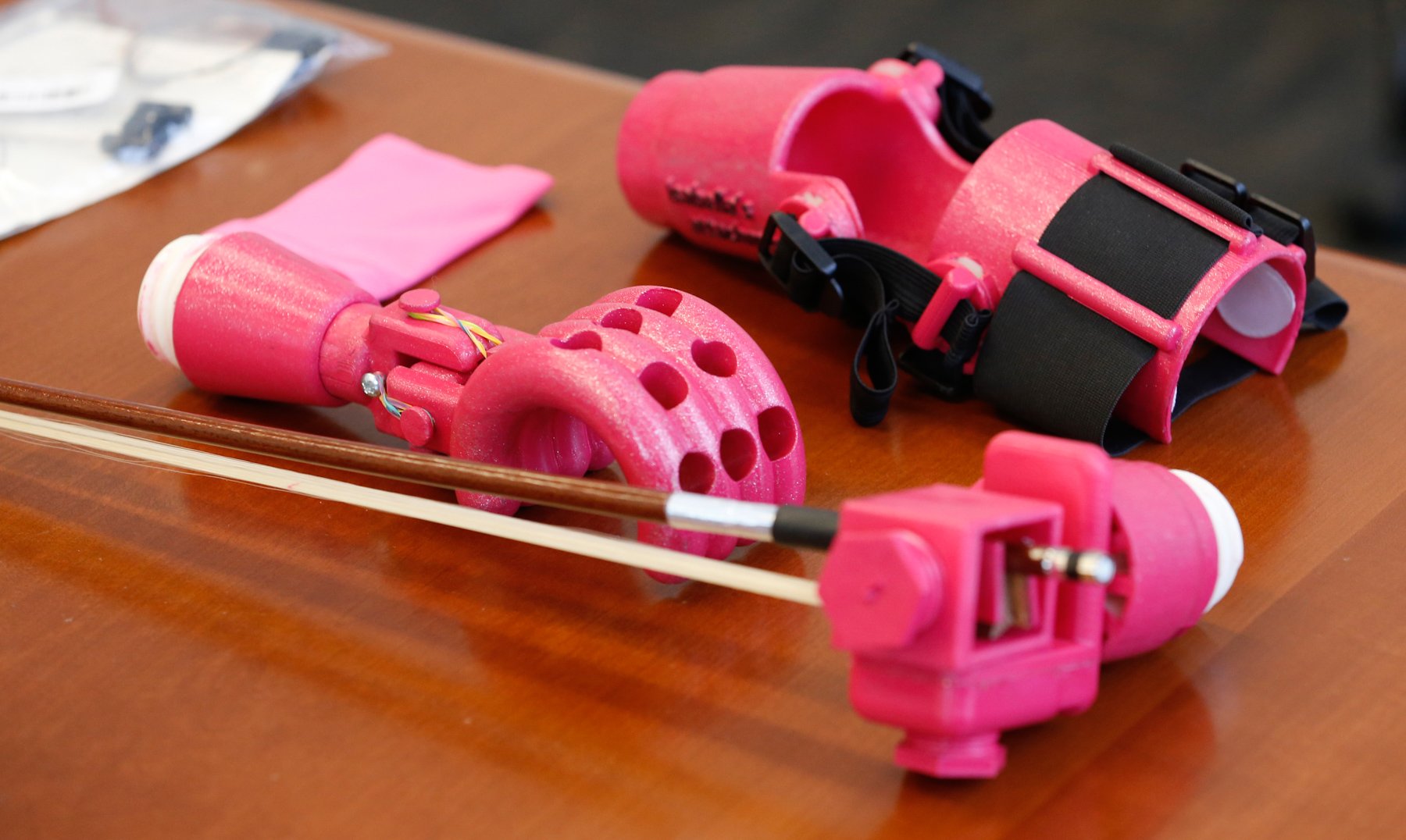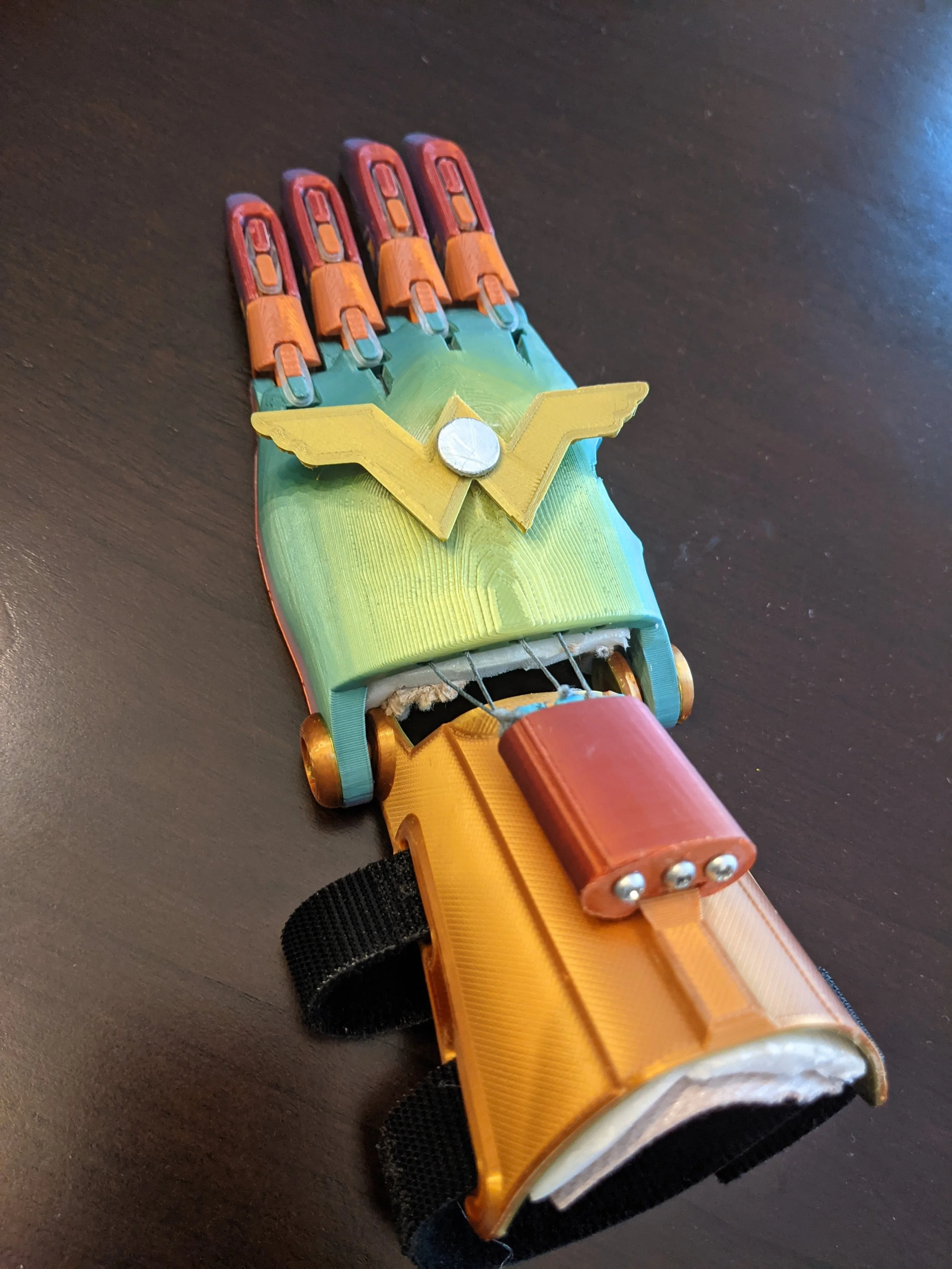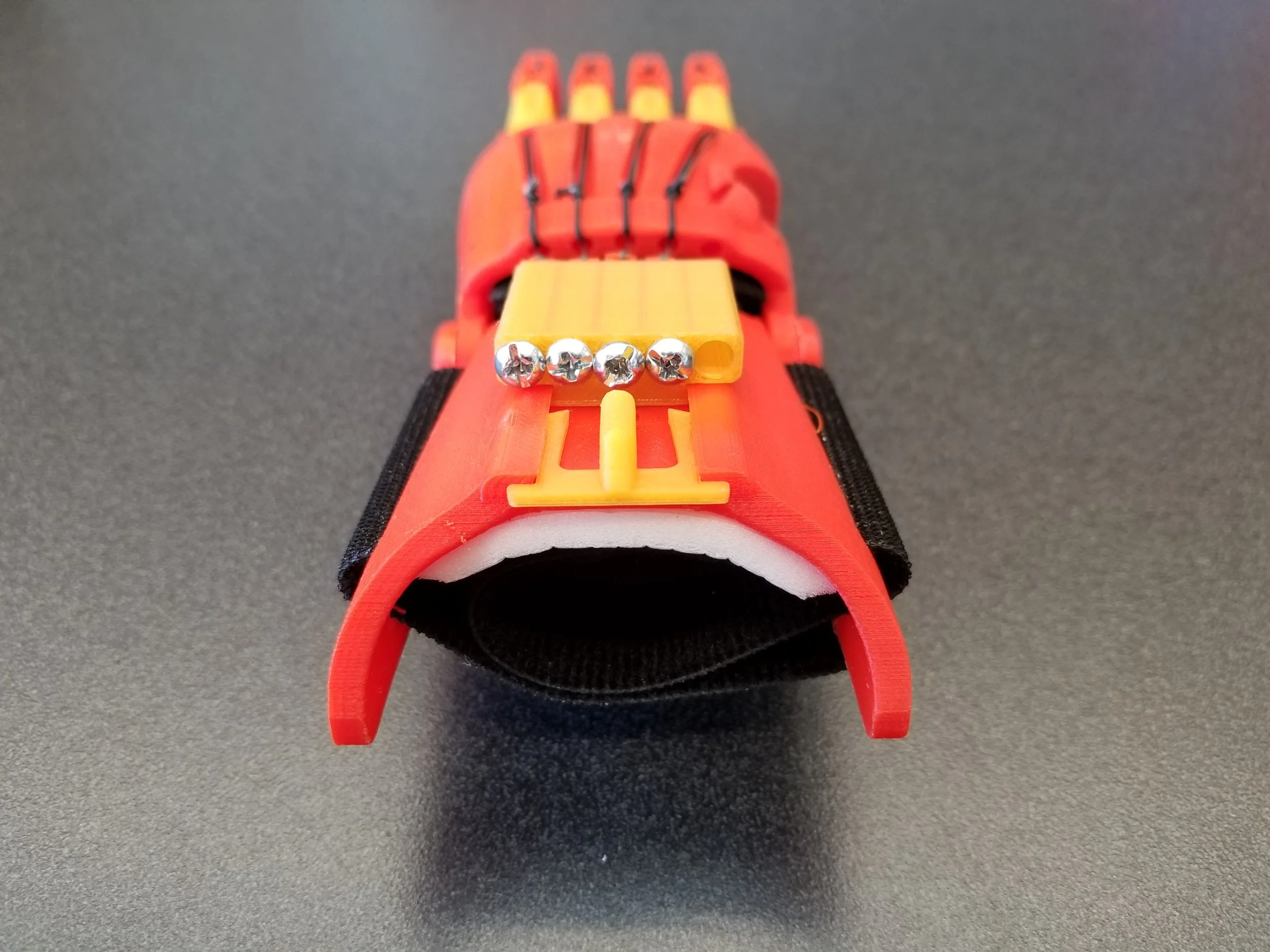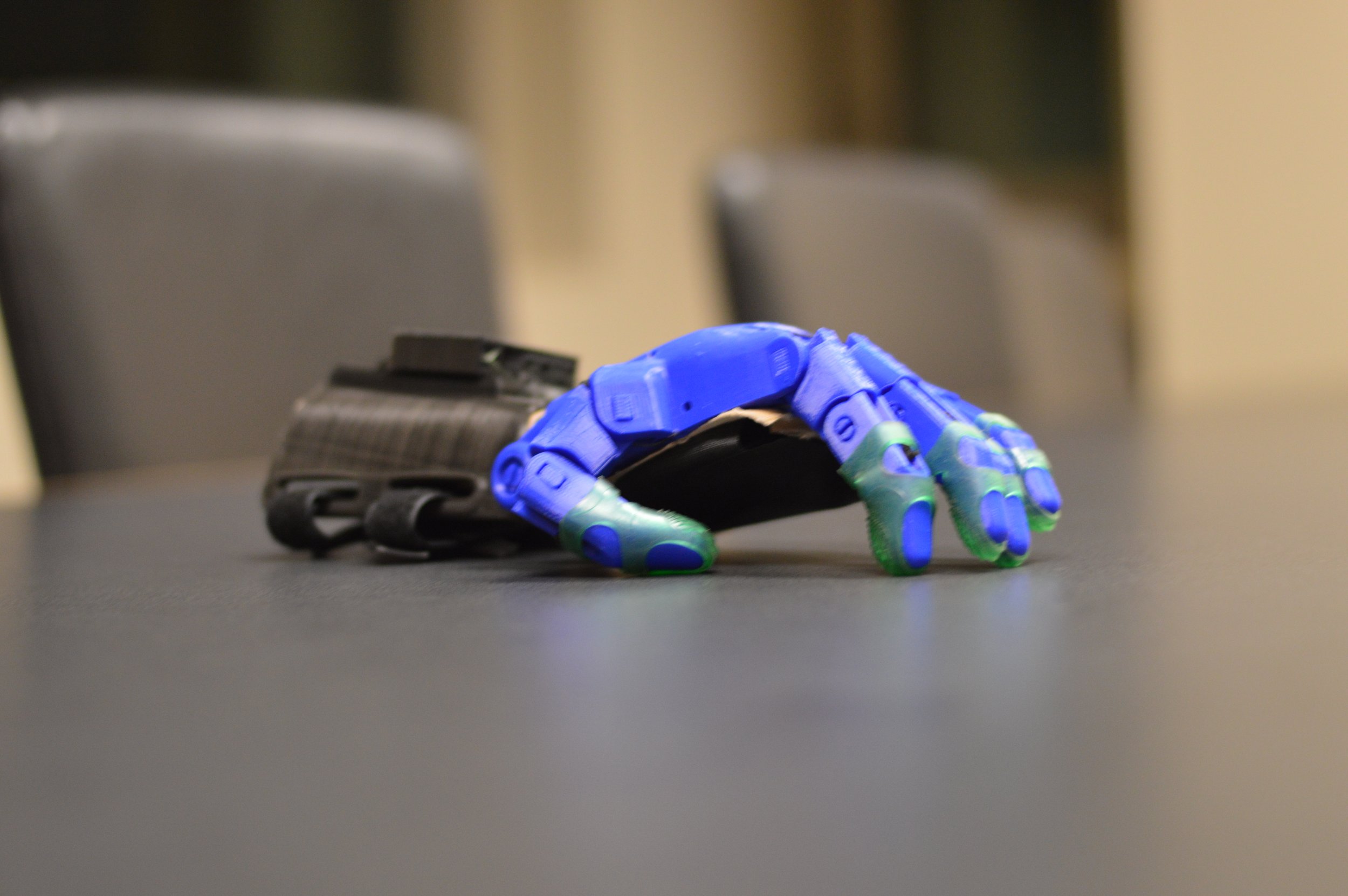Our Current Designs
-

Adapted Phoenix Hand
Team Lead: Emily Vroom
Overall Design Goal:
Our team is working to develop a device based off of a modification of the phoenix hand design. We are hoping to add custom features to the device to make it unique based on the user’s preferences. Our team is made up of a variety of different majors to add different perspectives on the best design for the device. Through our collaboration, we are hoping to finish the design of the device by the end of the semester. We are excited to work on this project and can’t wait for the hand to get sent out!
-
Adapted Phoenix Hand
Team Lead: Kaelyn Nelson
Overall Design Goal:
Our mission this semester is to design a variation of the Phoenix hand that will meet our specific needs. We will develop a solution that is adaptable to one’s daily activities. We hope that our hand will be compatible with a highly active lifestyle. We also plan to design custom parts specific to our user that will allow for our team to gain more CAD experience.
-

Adapted Phoenix Hand
Team Lead: Jon Badillo
Overall Design Goal:
Our group's main design goal is to design a fully adjustable device capable of assisting hand movements with muscular weakness. We plan to achieve this goal by designing a 3d printed glove and figure 9 brace that will be adjustable as the user's size changes. The glove will be connected to the brace so that when the user extends their arm, the device will assist in opening the hand. The glove will be made in a unique way to maximize the comfortability of the glove, while having an efficient connection to the brace. The brace will be designed like a normal over the shoulder figure 9 brace, but will include custom components to address the adjustability of the brace.
-
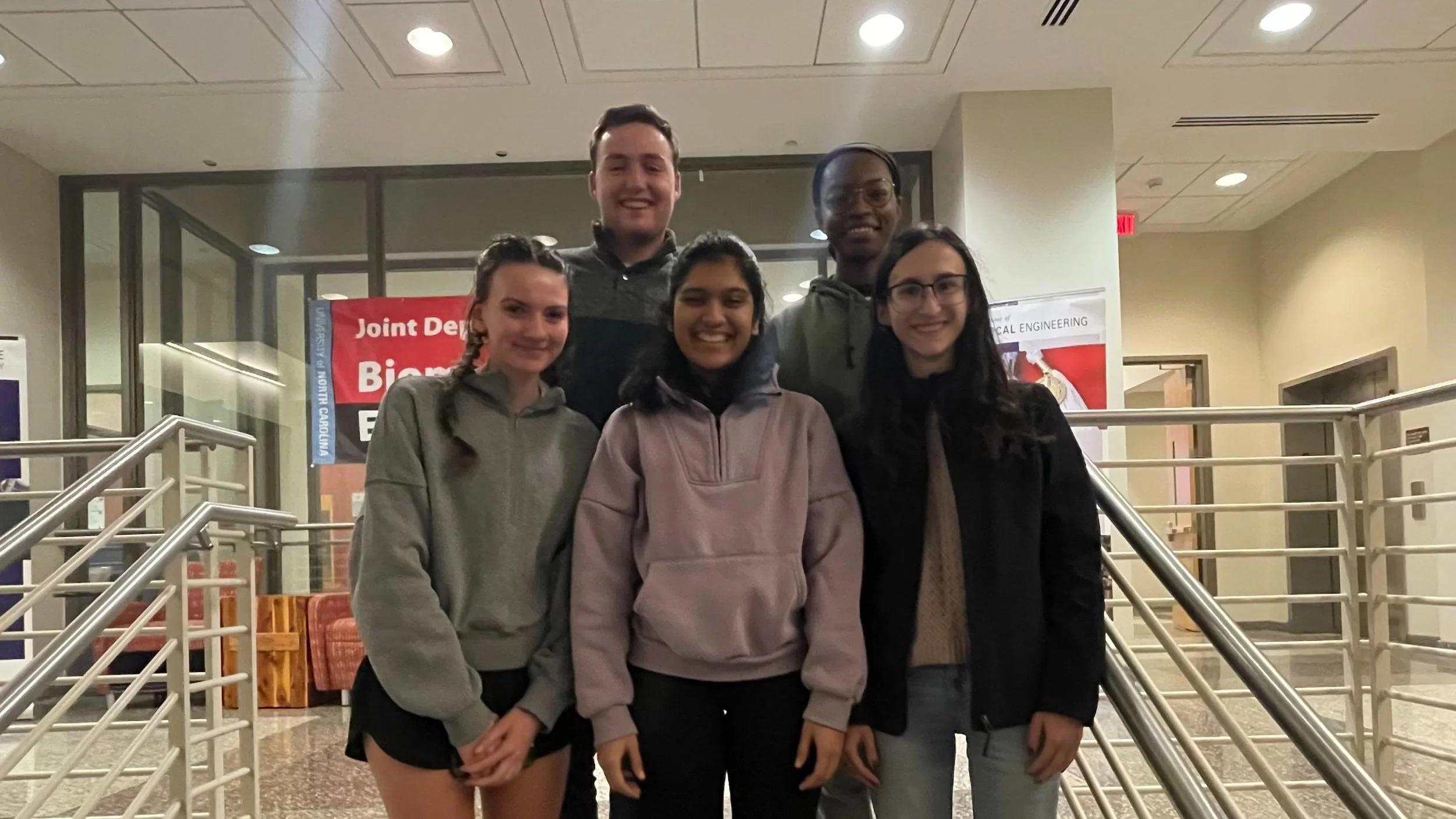
Adapted Phoenix Hand
Team Lead: Madeline Smith
Overall Design Goal:
Our Case Design team is focused on creating two prosthetics. One with four fingers and a thumb and another with three fingers. The individual these are designed for has residual digits up to the PIP joint. As a result, our design must comfortably work with the rest of her hand. We are using a popular design for the digits and modifying its measurements, and innovating a comfortable, flexible design to connect the printed digits to the user.
-

Monkey Bars Assistive Device
Team Lead: Gavin Drumm
Overall Design Goal:
We aim to research how to make 3D-printed devices as strong as possible, and then utilize these innovations to create devices suitable for high-stress activities such as heavy lifting and pulling. We focus mainly on using the geometry of our designs, printing orientation, and post-processing methods to increase the tensile strength of our prints. We also focus on making the device comfortable to wear, so that it does not create any unnecessary or excessive strain on the user. Currently, we are developing a prosthetic device for a specific person, who would like to use monkey bars. We are working on applying the knowledge gained from our research to make a safe, comfortable, and usable device for them to use.
-

Finger Assistive Device
Team Lead: Mylah Williams & Nathan Glymph
Overall Design Goal:
The digit design team is working to expand the club's scope by working to make effective and aesthetic devices tailored to those with differences specifically affecting the digits. Our goal is to create two designs, one for the thumb and one for the fingers, that can be easily adjusted to suit the needs of different individuals. We are excited to begin our development of this project this semester and hope to lay the groundwork for future cases at the club!
-

Video Game Assistive Device
Team Lead: Ethan Jones
Overall Design Goal:
The video game team is a research and development case team that develops upper-limb difference attachments and prosthetics that allows someone with an upper-limb difference to more feasibly use an XBOX and PS4 game controller. The PS4 user system is a series of small devices that attach to the PS4 controller, requiring no prosthetics. The XBOX user system is a prosthetic device that attaches to the XBOX controller. We hope to innovate and provide a platform for future video adaptation devices, allowing those with limb differences to find enjoyment and inclusion in video games.
-

Adapted Phoenix Hand
Team Lead: Avery Murray
Overall Design Goal:
Our team is dedicated to creating a custom 3D-printed Phoenix Hand. We designed a prosthetic hand that incorporates a thumb, pointer, and middle finger. This device is designed to give the appearance of a full hand, helping the user feel more comfortable and confident.
We aimed to make the device unique. The design is customized with designs and colors specific to the users preferences. We have successfully completed the final print of the left hand and have just printed our first draft of the right hand. Through this project, we strive to make a device that brings the user joy and confidence in their everyday activities.
-
Case Team Manager
Manager: Karl Shroff
Krshroff@ncsu.edu
Goals of Case Design:
As the Case Design Team of The Helping Hands Project at NC we take pride in researching, developing, and assembling custom recreational prosthetic devices for the upper limb difference community. Case Teams work hard to provide devices for those who may not be able to afford it, or those who want a fun, personalized device. Our mission is to support the limb difference community through engineering, design, and innovation. The Case Design Team focuses both on individual devices for recipients, as well as research and development of specialized task-based devices that may be offered in the future. Through our designs and devices, we hope to make a difference in raising awareness and support for the limb difference community.

